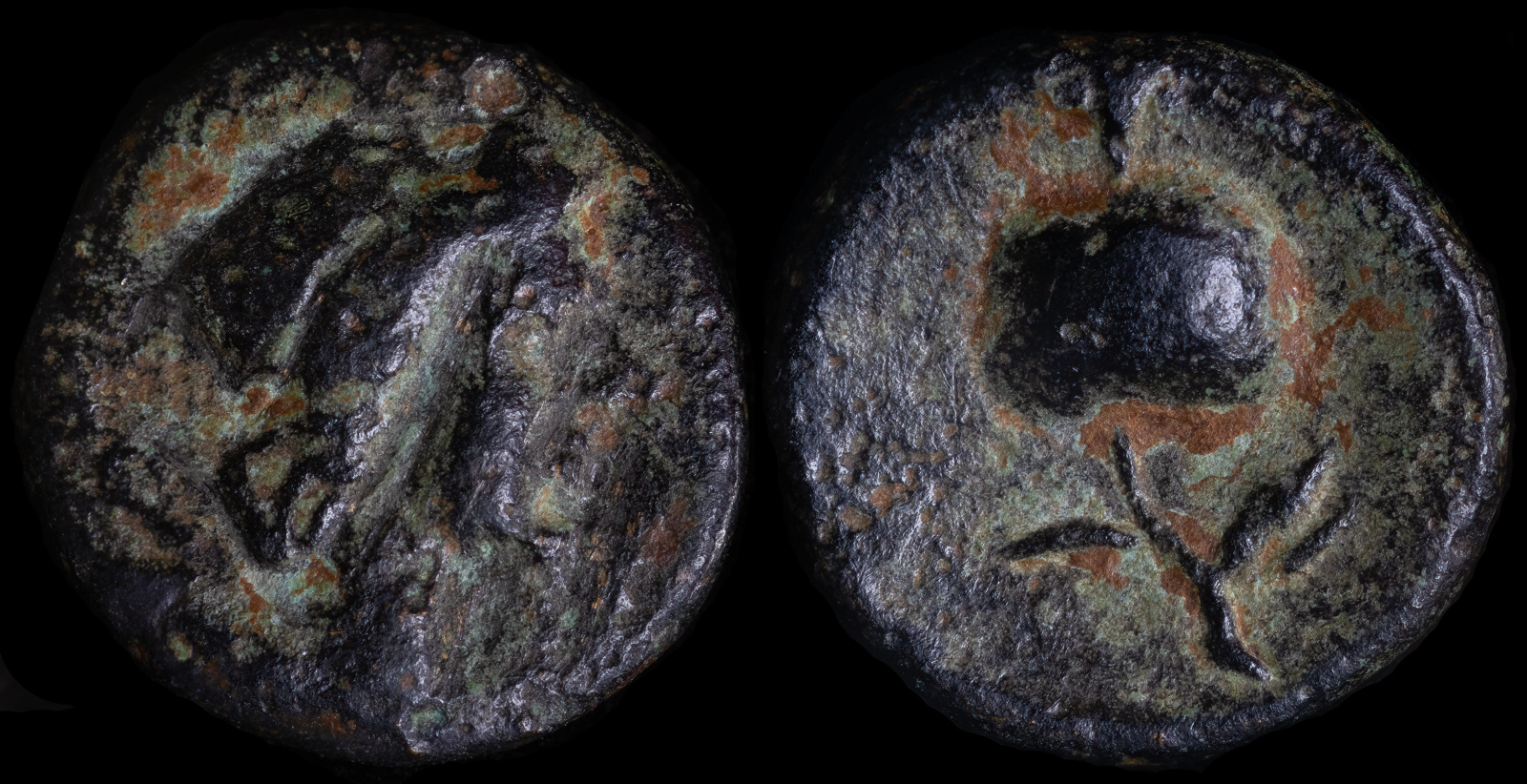
Pamphylia. Side
3rd-2nd centuries BCE
AE 12.20mm 1.81g
Obverse: Draped bust of Artemis right, with quiver over shoulder
Reverse: Pomegranate
SNG BN 758
Side was one of the very first Greek ruins that I visited. It was on a trip to Turkey and we were staying in Antalya. This was also one of the first decent shots I managed of a Greek temple, though I had no idea at the time that I’d eventually own a coin from the city.
Side was founded by settlers from Kyme in Aeolis around 700 BCE. Interestingly, the area had its own language that remains undeciphered today. Inscriptions have been found with it in the ruins that date to the 3rd to 2nd centuries BCE, which means it was spoken when this coin was minted. There is some conjecture that the word for ‘pomegranate’ in this ancient language was ‘Side’ and the city was therefore named from it.
Hellenistic culture didn’t really take root in Side until it was occupied by Alexander the Great. He took Side without conflict and left a garrison there. Afterwards, the city flourished, since it had a great port that facilitated trading. After his death, the city was controlled by the Lagids, first under Ptolemy I, until it was occupied by the Seleukids in the 2nd century BCE.
The ruins, especially those built during Roman times, are still in great condition and I took a number of photos there.
This is among the earliest coinage (if not the earliest) from Side and interestingly depicts Artemis, even though Athena was the patron goddess of the city.
Pomegranates continue to be abundant in the area.
Approximate time when Side is settled by colonists from Kyme.
Alexander the Great captures Perge, then marches on to Aspendos. The inhabitants agree to taxes in exhange for being left alone, but as Alexander continues to Side and Sillyon, he learns that Aspendos did not ratify the taxes. Enraged, he turns his army around. Aspendos quickly surrenders, but this time Alexander gives them far harsher terms.
On the death of Amyntas, king of Galatia, Rome turns Pisidia – including Sagalassos, Side, and Kremna – into a separate province of Galatia.